Matt Rees's Blog, page 6
August 15, 2013
Daily Caravaggio: The Madonna with the Serpent
My favorite painting ever and the key to my portrayal of Caravaggio's death in my novel about the great Italian artist.
 To coincide with the paperback publication of my Caravaggio novel A NAME IN BLOOD, I'm posting each of the paintings that appear in the book each day this month. This stunning painting has a number of names, The Madonna and Child with St. Anne or the Madonna dei Palafrenieri (after the papal grooms for whose chapel in St. Peters it was commissioned.) It's one of six (if I'm counting right) Caravaggios at the Galleria Borghese in Rome. For me it's the greatest of Caravaggio's works, and it plays a key role in my novel because it represents a moment in which the artist fell in love with the model for his Virgin. She was named Lena Antognetti and she's (no spoilers) very important to the plot of my book. Here's Caravaggio's point of view as he's working on the painting:
To coincide with the paperback publication of my Caravaggio novel A NAME IN BLOOD, I'm posting each of the paintings that appear in the book each day this month. This stunning painting has a number of names, The Madonna and Child with St. Anne or the Madonna dei Palafrenieri (after the papal grooms for whose chapel in St. Peters it was commissioned.) It's one of six (if I'm counting right) Caravaggios at the Galleria Borghese in Rome. For me it's the greatest of Caravaggio's works, and it plays a key role in my novel because it represents a moment in which the artist fell in love with the model for his Virgin. She was named Lena Antognetti and she's (no spoilers) very important to the plot of my book. Here's Caravaggio's point of view as he's working on the painting:
 To coincide with the paperback publication of my Caravaggio novel A NAME IN BLOOD, I'm posting each of the paintings that appear in the book each day this month. This stunning painting has a number of names, The Madonna and Child with St. Anne or the Madonna dei Palafrenieri (after the papal grooms for whose chapel in St. Peters it was commissioned.) It's one of six (if I'm counting right) Caravaggios at the Galleria Borghese in Rome. For me it's the greatest of Caravaggio's works, and it plays a key role in my novel because it represents a moment in which the artist fell in love with the model for his Virgin. She was named Lena Antognetti and she's (no spoilers) very important to the plot of my book. Here's Caravaggio's point of view as he's working on the painting:
To coincide with the paperback publication of my Caravaggio novel A NAME IN BLOOD, I'm posting each of the paintings that appear in the book each day this month. This stunning painting has a number of names, The Madonna and Child with St. Anne or the Madonna dei Palafrenieri (after the papal grooms for whose chapel in St. Peters it was commissioned.) It's one of six (if I'm counting right) Caravaggios at the Galleria Borghese in Rome. For me it's the greatest of Caravaggio's works, and it plays a key role in my novel because it represents a moment in which the artist fell in love with the model for his Virgin. She was named Lena Antognetti and she's (no spoilers) very important to the plot of my book. Here's Caravaggio's point of view as he's working on the painting:
He had never been so happy. Something had become free in him. He ascribed it to the liveliness the Antognettis brought to his studio and his love for them. The way Lena tickled the boy when Caravaggio wasn’t watching, the boy’s fascination with the painter’s mirrors, the old woman’s pride in the talent of her daughter’s man. He could see his own contentment in the paint too, feel it in his brush. On the canvas, every fold in the women’s skirts seemed entirely true to him. He wanted to step into the painting. He knew the Madonna would welcome him. In spite of all the wrong he had done in his life, she would draw his head to her breast, just as Lena did every night.
Published on August 15, 2013 02:07
•
Tags:
art-history, caravaggio, covers, crime-fiction, food, historical-fiction, italy, rome
August 14, 2013
Read a free chapter from my Caravaggio novel
A chapter from my Caravaggio novel A NAME IN BLOOD about one of the great Italian artist's most famous and controversial works.
 To coincide with the paperback publication of my Caravaggio novel A NAME IN BLOOD, I'm posting each of the paintings that appear in the book each day this month. The Death of the Virgin is truly one of the most magnificent works of art ever painted. These days it's at the Musee du Louvre. But when Caravaggio first revealed it in a Roman church, it caused a scandal and was soon removed. The controversy was caused by the portrayal of the Virgin as a peasant (with a whore used as the model) and as truly dead. Not ascending to heaven. Just dead. Here's one of the chapters from my novel where this painting is central. Caravaggio is summoned to the office of Cardinal del Monte, one of his patrons:
To coincide with the paperback publication of my Caravaggio novel A NAME IN BLOOD, I'm posting each of the paintings that appear in the book each day this month. The Death of the Virgin is truly one of the most magnificent works of art ever painted. These days it's at the Musee du Louvre. But when Caravaggio first revealed it in a Roman church, it caused a scandal and was soon removed. The controversy was caused by the portrayal of the Virgin as a peasant (with a whore used as the model) and as truly dead. Not ascending to heaven. Just dead. Here's one of the chapters from my novel where this painting is central. Caravaggio is summoned to the office of Cardinal del Monte, one of his patrons:
Del Monte scented himself with ambergris from the stomach of a sperm whale to counter the anticipated reek of the tavern on Caravaggio. He regretted what he had to tell him. He had seen the sorrowing soul of his old protégé in every inch of The Death of the Virgin. That Holy Mother would never rise to glory beside Her Son; she was dead, and those around her grieved like people without faith. When will he be here? the cardinal wondered. How many inns can there be for my footmen to search? He dabbed a few extra spots of the musk secretions of a deer along his lace collar and inhaled.
Caravaggio entered the study and weaved across the floor. It was evident that it cost him some effort to stay upright. His knee-length pantaloons were dusted with the lime innkeepers spread in their privies. Olive oil and gravy smeared his doublet. His whole body pulsated with tiny, seemingly uncontrollable motions. Yet his jaw was clamped so tight that del Monte thought he might hear the man’s teeth creaking like the boards of a ship in a storm. He caught a whiff of sweat as Caravaggio bent to kiss his ring. He inclined his nose to the musk on his collar.
‘I’m sorry to tell you that the Shoeless Fathers have rejected your painting, Maestro Caravaggio,’ he said.
Caravaggio grimaced and swayed. ‘Fine.’ He slurred even this briefest of utterances.
‘Maestro Baglione –’
A mumbled curse.
‘Maestro Baglione has been heard to say that you cover up your mistakes with shadows.’
A snort of contempt, his fist tight around the hilt of his sword. He used to have a servant to carry that for him, like a gentleman, del Monte thought. Now he wears it, as if at any moment he means to use it.
‘Cardinal Scipione has requested that I find a buyer for the rejected painting.’
‘Yeah?’ The artist’s lips barely moved.
I wonder he doesn’t belch at me. ‘I’ve some hopes of the Flemish fellow Rubens, who’s acting as agent for the Duke of Mantua in certain purchases. He’s an admirer of yours.’
To that, only a shrug and a queasy gulp, as if Caravaggio strove not to vomit in the cardinal’s study. Del Monte pursed his lips. At least he still has that much respect for me.
‘Michele, you understand the seriousness of what has happened?’
‘You mean the pregnant whore thing?’
‘Exactly.’
‘She’s not a whore. She’s not pregnant either. Not any more.’
‘The Carmelites – encouraged by certain artists – suggest that it would’ve been more appropriate to depict the Virgin carried heavenward by angels.’
‘When I see people flying, it’s usually because I’ve been too long in the tavern.’ Caravaggio stretched out his arms, flapped them and let them fall. His smile was forlorn.
‘For heaven’s sake, even Maestro Carracci painted the Virgin’s death as a joyful moment.’
‘I expect he regrets it. Anyway, Annibale’s good, but he’s not me.’
He has withdrawn from me before, del Monte thought, but never like this. Caravaggio was shut away behind this roughhouse façade, as if he were locked up with a courtesan for the weekend. Everything he painted aroused controversy – criticism of his work couldn’t be the only cause of this conduct. It must be that girl. ‘The art in our churches is not for our amusement. It’s supposed to be inspiring. If you don’t paint the Virgin ascending mystically into the sky, the worshippers at the church may fail to believe that it happened.’
‘The body doesn’t ascend. Haven’t you heard about such a thing as a soul? That’s what goes to heaven.’ Caravaggio closed his eyes, looking inward. He opened them suddenly, seeming to panic, scanning the room as if he feared his spirit had stolen away while he spoke. ‘What’s left is a bag of bones.’
Del Monte considered that Caravaggio may have deliberately presented himself in this condition, almost like a corpse, the living example of what he wanted people to see in The Death of the Virgin. A body, abused and wasting, meaning nothing, and a soul that made of itself the purest art.
‘I have, indeed, heard of the soul,’ the cardinal said. ‘I very much fear for yours.’
Read more about A NAME IN BLOOD by Matt Rees. Get the book.
 To coincide with the paperback publication of my Caravaggio novel A NAME IN BLOOD, I'm posting each of the paintings that appear in the book each day this month. The Death of the Virgin is truly one of the most magnificent works of art ever painted. These days it's at the Musee du Louvre. But when Caravaggio first revealed it in a Roman church, it caused a scandal and was soon removed. The controversy was caused by the portrayal of the Virgin as a peasant (with a whore used as the model) and as truly dead. Not ascending to heaven. Just dead. Here's one of the chapters from my novel where this painting is central. Caravaggio is summoned to the office of Cardinal del Monte, one of his patrons:
To coincide with the paperback publication of my Caravaggio novel A NAME IN BLOOD, I'm posting each of the paintings that appear in the book each day this month. The Death of the Virgin is truly one of the most magnificent works of art ever painted. These days it's at the Musee du Louvre. But when Caravaggio first revealed it in a Roman church, it caused a scandal and was soon removed. The controversy was caused by the portrayal of the Virgin as a peasant (with a whore used as the model) and as truly dead. Not ascending to heaven. Just dead. Here's one of the chapters from my novel where this painting is central. Caravaggio is summoned to the office of Cardinal del Monte, one of his patrons:Del Monte scented himself with ambergris from the stomach of a sperm whale to counter the anticipated reek of the tavern on Caravaggio. He regretted what he had to tell him. He had seen the sorrowing soul of his old protégé in every inch of The Death of the Virgin. That Holy Mother would never rise to glory beside Her Son; she was dead, and those around her grieved like people without faith. When will he be here? the cardinal wondered. How many inns can there be for my footmen to search? He dabbed a few extra spots of the musk secretions of a deer along his lace collar and inhaled.
Caravaggio entered the study and weaved across the floor. It was evident that it cost him some effort to stay upright. His knee-length pantaloons were dusted with the lime innkeepers spread in their privies. Olive oil and gravy smeared his doublet. His whole body pulsated with tiny, seemingly uncontrollable motions. Yet his jaw was clamped so tight that del Monte thought he might hear the man’s teeth creaking like the boards of a ship in a storm. He caught a whiff of sweat as Caravaggio bent to kiss his ring. He inclined his nose to the musk on his collar.
‘I’m sorry to tell you that the Shoeless Fathers have rejected your painting, Maestro Caravaggio,’ he said.
Caravaggio grimaced and swayed. ‘Fine.’ He slurred even this briefest of utterances.
‘Maestro Baglione –’
A mumbled curse.
‘Maestro Baglione has been heard to say that you cover up your mistakes with shadows.’
A snort of contempt, his fist tight around the hilt of his sword. He used to have a servant to carry that for him, like a gentleman, del Monte thought. Now he wears it, as if at any moment he means to use it.
‘Cardinal Scipione has requested that I find a buyer for the rejected painting.’
‘Yeah?’ The artist’s lips barely moved.
I wonder he doesn’t belch at me. ‘I’ve some hopes of the Flemish fellow Rubens, who’s acting as agent for the Duke of Mantua in certain purchases. He’s an admirer of yours.’
To that, only a shrug and a queasy gulp, as if Caravaggio strove not to vomit in the cardinal’s study. Del Monte pursed his lips. At least he still has that much respect for me.
‘Michele, you understand the seriousness of what has happened?’
‘You mean the pregnant whore thing?’
‘Exactly.’
‘She’s not a whore. She’s not pregnant either. Not any more.’
‘The Carmelites – encouraged by certain artists – suggest that it would’ve been more appropriate to depict the Virgin carried heavenward by angels.’
‘When I see people flying, it’s usually because I’ve been too long in the tavern.’ Caravaggio stretched out his arms, flapped them and let them fall. His smile was forlorn.
‘For heaven’s sake, even Maestro Carracci painted the Virgin’s death as a joyful moment.’
‘I expect he regrets it. Anyway, Annibale’s good, but he’s not me.’
He has withdrawn from me before, del Monte thought, but never like this. Caravaggio was shut away behind this roughhouse façade, as if he were locked up with a courtesan for the weekend. Everything he painted aroused controversy – criticism of his work couldn’t be the only cause of this conduct. It must be that girl. ‘The art in our churches is not for our amusement. It’s supposed to be inspiring. If you don’t paint the Virgin ascending mystically into the sky, the worshippers at the church may fail to believe that it happened.’
‘The body doesn’t ascend. Haven’t you heard about such a thing as a soul? That’s what goes to heaven.’ Caravaggio closed his eyes, looking inward. He opened them suddenly, seeming to panic, scanning the room as if he feared his spirit had stolen away while he spoke. ‘What’s left is a bag of bones.’
Del Monte considered that Caravaggio may have deliberately presented himself in this condition, almost like a corpse, the living example of what he wanted people to see in The Death of the Virgin. A body, abused and wasting, meaning nothing, and a soul that made of itself the purest art.
‘I have, indeed, heard of the soul,’ the cardinal said. ‘I very much fear for yours.’
Read more about A NAME IN BLOOD by Matt Rees. Get the book.
Published on August 14, 2013 03:31
•
Tags:
art-history, caravaggio, covers, crime-fiction, food, historical-fiction, italy, rome
August 12, 2013
Daily Caravaggio: Rest on the Flight into Egypt
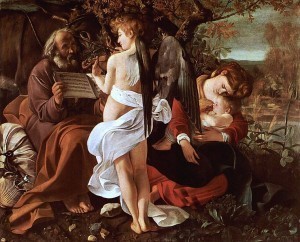 To coincide with the paperback publication of my Caravaggio novel A NAME IN BLOOD, I'm posting each of the paintings that appear in the book each day this month. The Rest on the Flight into Egypt is one of three Caravaggio masterpieces housed at the fabulous Doria Pamphilij Gallery in Rome. It's from about 1597 and is quite unlike his more characteristic later works. But it makes a great impression for the deeply human way in which he portrays relationship between the Virgin and her son. Here's Caravaggio recalling his work on the painting in my novel:
To coincide with the paperback publication of my Caravaggio novel A NAME IN BLOOD, I'm posting each of the paintings that appear in the book each day this month. The Rest on the Flight into Egypt is one of three Caravaggio masterpieces housed at the fabulous Doria Pamphilij Gallery in Rome. It's from about 1597 and is quite unlike his more characteristic later works. But it makes a great impression for the deeply human way in which he portrays relationship between the Virgin and her son. Here's Caravaggio recalling his work on the painting in my novel:
He barely knew what he had done at the time, a few years after arriving in Rome. A scene of the Holy Family succoured by the music of an angel as they fled the vengeful Herod, painted with the dreamy clarity of the Venetian school. But later, in the gallery of the Lady Olimpia Aldobrandini, he had recognized that his heart was imprinted on the canvas.
In that painting, exhausted by the journey, the Holy Mother rested her cheek on her baby’s head. The little Jesus, also half-asleep, picked at her mantle, as though he dreamed of feeding at her breast. Menica’s friend Anna had modelled for the Virgin. She had understood that her life as a cheap whore wouldn’t be a long one. Still she had faith that there might be an escape. Caravaggio had illustrated her hope and fear and acceptance in the drained, loving Virgin. The love of a mother who knew her son would be a sacrifice and was yet willing to undergo the hardships of the desert to preserve him for it. I saw all that in the face of a whore.
Anna had been dead a year now, at twenty-five, her skin wasted and scarred, her red hair dry and lustreless. He was with her at the end, and she had reminisced about the sixteen-year-old beauty he had painted as the Virgin. When she expired, he had dropped his head to her breast and shocked himself with his weeping. He had known many whores who had disappeared from the streets with little more than a shrug from him. Yet he had cried for Anna as though she had invented death, a malignant novelty displayed in a gallery which only he might view.
Published on August 12, 2013 01:43
•
Tags:
art-history, caravaggio, covers, crime-fiction, food, historical-fiction, italy, rome
August 11, 2013
Daily Caravaggio: Madonna of Loreto
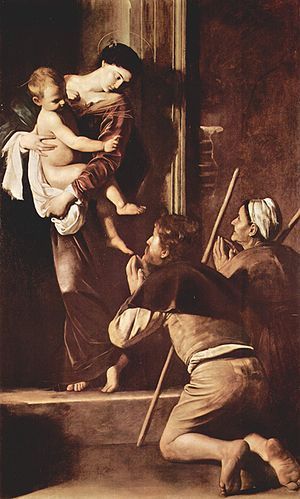 To coincide with the paperback publication of my Caravaggio novel A NAME IN BLOOD, I'm posting each of the paintings that appear in the book each day for the next month. At the center of the novel is Caravaggio's relationship with his model for this painting The Madonna of Loreto, which is in the Church of Sant'Agostino in Rome. Her name was Lena. Caravaggio's portrayals of her, as a Virgin who was also a poor woman living in a slum, were controversial -- even dangerous. Here he sees her at her door for the first time:
To coincide with the paperback publication of my Caravaggio novel A NAME IN BLOOD, I'm posting each of the paintings that appear in the book each day for the next month. At the center of the novel is Caravaggio's relationship with his model for this painting The Madonna of Loreto, which is in the Church of Sant'Agostino in Rome. Her name was Lena. Caravaggio's portrayals of her, as a Virgin who was also a poor woman living in a slum, were controversial -- even dangerous. Here he sees her at her door for the first time:At the burnt sienna towers of the Church of Sant’Atanasio, he cut onto the Via dei Greci, into the Evil Garden. The low morning sun struggled to drive the night from the narrow street. A pair of beggars knelt at the rough gray step of a small house, their fingers steepled, beseeching charity. The young woman in the doorway held a three-year-old boy on her hip. The boy was naked, half wrapped in a towel, as though the beggars’ call had interrupted his bathtime.
Caravaggio approached, watching the girl. The house was dark behind her. Daylight seemed to penetrate the street just for her, illuminating the eggshell clarity of her neck and chest. She crossed her bare feet and went up and down on her toes, pivoting from her hip to swing the boy as she listened to the old woman’s story. She let her head drop to her left so that her chin touched her collar bone, as she looked down upon the kneeling woman with compassion and reassurance.
He recognized her. The maid who had been cleaning the floor at del Monte’s palace. She’s turning her hips the opposite way to her shoulders, he noted, as though she knows about the contrapposto pose. She has found the grace of classical form without anyone having to teach her an academic term for it.
Caravaggio leaned against the wall by the threshold. The plaster had come away beside the chipped travertine of the doorway, exposing the brick beneath. He smiled and was surprised by how little calculation there was in his open look.
Published on August 11, 2013 02:28
•
Tags:
art-history, caravaggio, covers, crime-fiction, food, historical-fiction, italy, rome
August 9, 2013
Daily Caravaggio: Pope Paul V
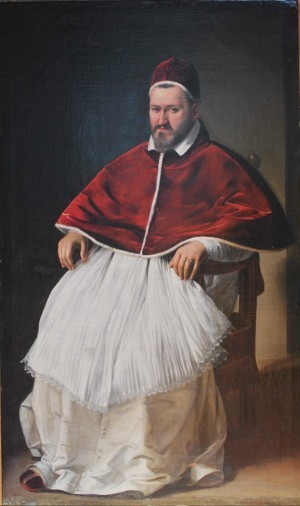 To coincide with the paperback publication of my Caravaggio novel A NAME IN BLOOD, I'm posting each of the paintings that appear in the book each day for the next month. Here's a nasty looking fellow, Pope Paul V. The Borghese Pope was new to the job when he chose Caravaggio to paint his portrait, and it's truly masterly. It doesn't back away from any of the bitterness and mendacity in his face. It reminds me, of course, of Pope Innocent X's reaction to the portrait Velazquez did of him half a century later: "It's too real," he said. By which he meant that the portrait, part of the Doria Pamphilij collection, didn't disguise his deviousness and anger as he might've expected. Here's what the pope's nephew Scipione says to Caravaggio about the portrait in my novel: "One gets the impression that he'll soon deliver some withering reproach." The portrait is privately held in the Palazzo Borghese in Rome. I've had the privilege to stand before it, and it's still more amazing as a life-size composition.
To coincide with the paperback publication of my Caravaggio novel A NAME IN BLOOD, I'm posting each of the paintings that appear in the book each day for the next month. Here's a nasty looking fellow, Pope Paul V. The Borghese Pope was new to the job when he chose Caravaggio to paint his portrait, and it's truly masterly. It doesn't back away from any of the bitterness and mendacity in his face. It reminds me, of course, of Pope Innocent X's reaction to the portrait Velazquez did of him half a century later: "It's too real," he said. By which he meant that the portrait, part of the Doria Pamphilij collection, didn't disguise his deviousness and anger as he might've expected. Here's what the pope's nephew Scipione says to Caravaggio about the portrait in my novel: "One gets the impression that he'll soon deliver some withering reproach." The portrait is privately held in the Palazzo Borghese in Rome. I've had the privilege to stand before it, and it's still more amazing as a life-size composition.
Published on August 09, 2013 01:17
•
Tags:
art-history, caravaggio, covers, crime-fiction, food, historical-fiction, italy, rome
August 8, 2013
Daily Caravaggio: Love Victorious
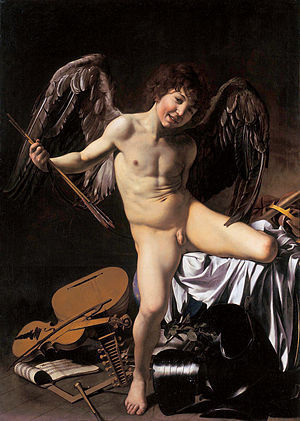 To mark the paperback publication of my Caravaggio novel A NAME IN BLOOD, I'm posting each of the paintings that appear in the book each day for the next month. In the novel I called this one "Love Victorious." (It's often known as "Amor Vincit Omnia.") Caravaggio painted it for Marchese Giustiniani. Onorio, Caravaggio's friend in the novel, calls it "the little Cupid smiling like he was game for anything." That appears to have been what Giustiniani thought too. When he showed visitors around his palazzo, he'd take them to this painting last, pull a cord to draw the curtain, and watch them gasp in shock and titilation. Is there an emoticon for that?...
To mark the paperback publication of my Caravaggio novel A NAME IN BLOOD, I'm posting each of the paintings that appear in the book each day for the next month. In the novel I called this one "Love Victorious." (It's often known as "Amor Vincit Omnia.") Caravaggio painted it for Marchese Giustiniani. Onorio, Caravaggio's friend in the novel, calls it "the little Cupid smiling like he was game for anything." That appears to have been what Giustiniani thought too. When he showed visitors around his palazzo, he'd take them to this painting last, pull a cord to draw the curtain, and watch them gasp in shock and titilation. Is there an emoticon for that?...
Published on August 08, 2013 03:17
•
Tags:
caravaggio, covers, crime-fiction, food, historical-fiction, italy, rome
August 7, 2013
Daily Caravaggio: St. Catherine
 To mark the paperback publication of my Caravaggio novel A NAME IN BLOOD, I'm posting each of the paintings that appear in the book each day for the next month. This is Saint Catherine. It's part of the collection at the Thyssen-Bornemisza Museum in Madrid. I was at the Thyssen some years ago and this image seduced me to the extent that I just had to write the novel. In A NAME IN BLOOD, Caravaggio stands before "St. Catherine," thinking about the whore he used as a model (who also features in the novel): "She strokes that rapier like it was the stiff member of a high-paying client."
To mark the paperback publication of my Caravaggio novel A NAME IN BLOOD, I'm posting each of the paintings that appear in the book each day for the next month. This is Saint Catherine. It's part of the collection at the Thyssen-Bornemisza Museum in Madrid. I was at the Thyssen some years ago and this image seduced me to the extent that I just had to write the novel. In A NAME IN BLOOD, Caravaggio stands before "St. Catherine," thinking about the whore he used as a model (who also features in the novel): "She strokes that rapier like it was the stiff member of a high-paying client."
Published on August 07, 2013 03:26
•
Tags:
crime-fiction, historical-fiction, historical-thrillers, lists
August 6, 2013
Daily Caravaggio: The Musicians
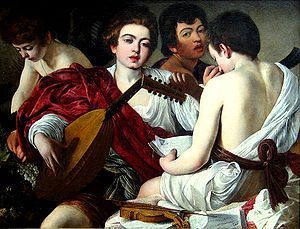 To mark the paperback publication of my Caravaggio novel A NAME IN BLOOD, I'm posting each of the paintings that appear in the book each day for the next month. This is "The Musicians," which is held at The Metropolitan Museum of Art in New York. Caravaggio painted it in 1595, soon after he went to live at the Palazzo Madama in Rome. Here's Caravaggio observing the painting in my novel: "Over the singer's shoulder, a self-portrait. He couldn't bear to look at it. He had made himself appear so innocent and wan, his lips parted in a tender, sensuous moan. He found it hard to remember a day when you could have truly read such inexperience and freshness on his face."
To mark the paperback publication of my Caravaggio novel A NAME IN BLOOD, I'm posting each of the paintings that appear in the book each day for the next month. This is "The Musicians," which is held at The Metropolitan Museum of Art in New York. Caravaggio painted it in 1595, soon after he went to live at the Palazzo Madama in Rome. Here's Caravaggio observing the painting in my novel: "Over the singer's shoulder, a self-portrait. He couldn't bear to look at it. He had made himself appear so innocent and wan, his lips parted in a tender, sensuous moan. He found it hard to remember a day when you could have truly read such inexperience and freshness on his face."
Published on August 06, 2013 12:04
•
Tags:
art, art-history, caravaggio, crime-fiction, historical-fiction, italian-art, italy, thrilller
August 5, 2013
Mozart's Last Aria on Dinner and a Book
The lovely PBS show 'Dinner and a Book' featured my first novel THE COLLABORATOR OF BETHLEHEM a couple of years ago. Now the delightful crew at "Michiana's" public television channel discuss my novel MOZART'S LAST ARIA while cooking Wolfgang Mozart's favorite dish. Prepare to be utterly charmed!
Watch Mozart's Last Aria on PBS. See more from Dinner & A Book.
Published on August 05, 2013 10:40
•
Tags:
classical-music, historical-thriller, history, mozart, mozart-s-last-aria, music, pbs, video
June 23, 2013
Krimis, gialli, polars: What crime novels are called around the world
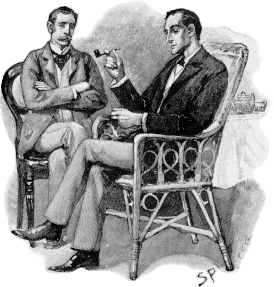 People talk about crime novels as though they were all the same. The sheer variety of names for sub-genres of the crime novel proves that isn’t true. Police procedural. Mystery novel. Thriller. Cosy. Exotic detective. Supernatural.
People talk about crime novels as though they were all the same. The sheer variety of names for sub-genres of the crime novel proves that isn’t true. Police procedural. Mystery novel. Thriller. Cosy. Exotic detective. Supernatural.I used to think there was little real difference, but then my UK publisher told me he wanted to change the title of my first novel “The Collaborator of Bethlehem.” He thought it sounded like a thriller (which men typically buy) and he wanted it to be clear that it was a mystery (so that women would pick it up.) He changed the title in Britain to “The Bethlehem Murders.” It sounds more like a mystery, although it always seems a little cosier to my ear than it ought. My original title sounds much closer to the gritty atmosphere of Bethlehem in the intifada that I recreated in that novel. I suppose he was right, because the book was nominated for five prizes in the US, but in the UK it actually won one: a Crime Writers Association Dagger.
In any case that’s only how the book was titled in English. My Spanish publisher called it "The Teacher of Bethlehem," as did my Italian editor. In German it's "The Traitor of Bethlehem." Etcetera.
When my second novel "A Grave in Gaza" came out, my London publisher was at it again. "Gaza makes me think of nonfiction," he said. So in the UK the book was called "The Saladin Murders," which sounds like a mystery, after all. (I used the name of the Saladin Road that runs the entire length of the Gaza Strip and which plays a big role in the action of the novel.)
As I travel around to promote my books in different countries (I’m published in 25 languages these days), I’ve noticed that it isn't only the titles of individual books that get different names. The entire genre of crime fiction gets some interesting and handy nicknames depending on where you are. Some of them are quite entertaining and often tell us how the genre developed in that country.
Take Italy. Mystery novels there are called “gialli,” or yellows. That’s because traditionally the genre was published with a yellow cover. Even today the mystery shelves of Italian bookshops are largely yellow, at least down the spine. Color is the theme also in Spain, where crime novels are “novelas negras,” black novels. According to a source of mine on the literary desk of El Pais, the big Spanish newspaper, this harks back to the old “Serie noire” of French publisher Gallimard. That series introduced the crime novel to Spain. So noir, or black, became the identifying color for a crime novel.
A “roman noir,” black novel, is also one of the ways of referring to a crime novel in France, because of that Gallimard series. But the most common slang for a mystery in French is “un polar.” It’s a contraction of “roman policier,” police novel, and was first recorded in 1968. If you ask most French people to explain the origin of the word “polar,” they can’t tell you: the abbreviation has become so common, they’ve forgotten its rather simple derivation.
Germany (as well as the Scandinavian countries) calls a crime novel “ein Krimi,” short for the word Kriminelle, criminal. No surprise there. It’s a catch-all for thrillers and detective stories of all kinds.
There is, however, an amusing sub-genre in German. In English, the “cosy” refers to Miss Marple-type novels in which the detective is an amateur, usually a lady (not just a woman), probably an inhabitant of a quaint village, investigating a murder in a country house or a vicarage. The Germans call these cosies “Häkel-Krimis“ -- “Crochet Crime-Novels.” Because the detective puts away her crocheting to solve the murder.
I’ll keep scouting for interesting ways of describing crime novels around the world. But if you know of some others, tell me about them.



